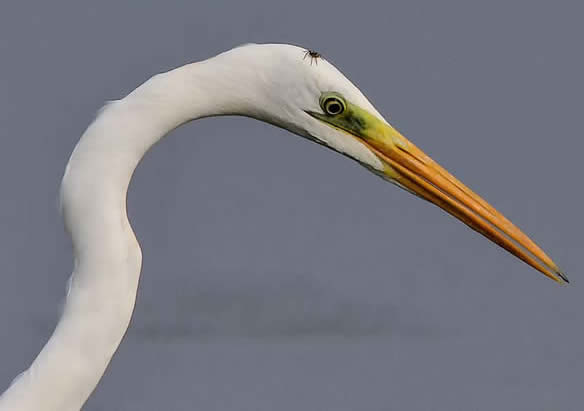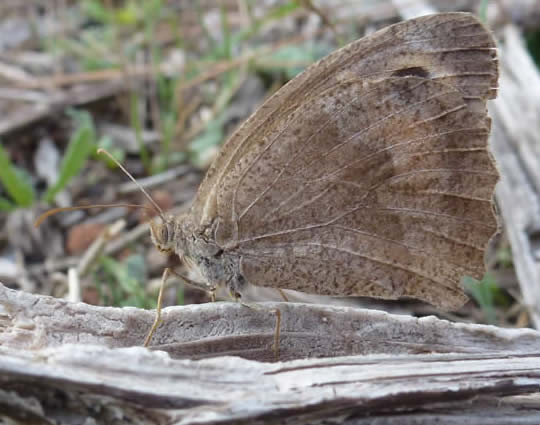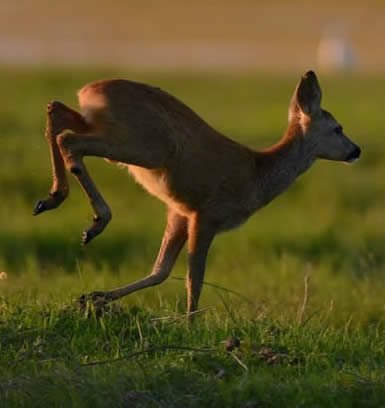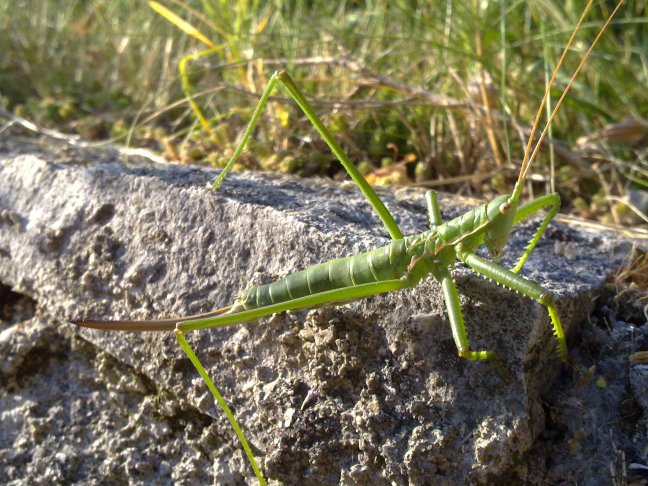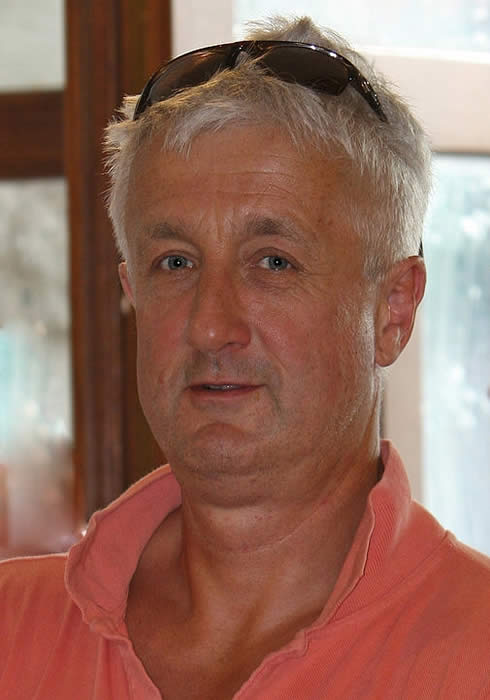From the Alps to the Adriatic in autumn
16 — 23 September 2015
In the heart of Europe (eastern Italy and Slovenia)
The northern end of the Adriatic, where the three great Indo-European language groups, Latin, Slav and Germanic, all meet, has an equally fascinating history and wildlife. A compact area of about 5000 km2 encompasses a vast range of habitats from rocky coasts and Mediterranean scrub to brackish lagoons and freshwater wetlands, extensive dry grasslands and on to karstic scrub and woodland, subalpine meadows, coniferous forests and Alpine grasslands above the tree-line.
As well as the range of habitats, the area’s position at the crossroads of Europe adds further biodiversity still, with components of the Balkan flora and fauna cheek-by-jowl with those from the Italian peninsula and western Europe.
The low lagoon- and estuary-studded coastline stretching from the head of the Adriatic southwestwards towards Venice and Ravenna contrasts with the rocky shore of limestone and sandstone that stretches almost unbroken down through the Balkans to Albania. Depopulation of the mountains of the interior has meant forest cover has increased five-fold since the Second World War and the wildlife has changed accordingly with both large carnivores and wild ungulates increasing rapidly as grazing and tree-cutting die out.
As elsewhere in the flower-rich Karst, the limestone areas are peppered with remarkable dolinas (swallow-holes) where the roofs of caves have collapsed, leaving hollows with their own micro-climate and a curious mixture of Alpine, western European, Balkan and Mediterranean flowers.
Birds
Wetland birds are well-represented here and the reserve where the holiday is based, the Isonzo River mouth, has the longest bird list for any single reserve in Europe, 325 species! 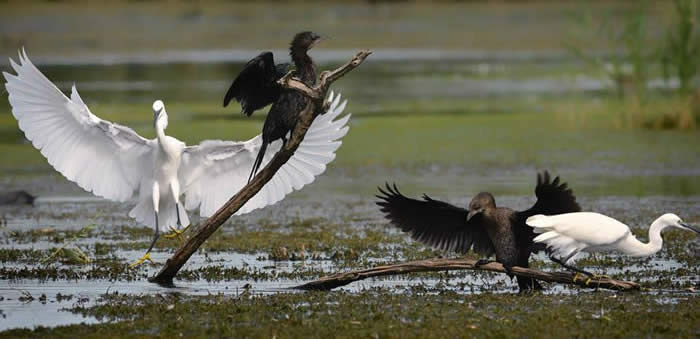
Little egrets and pygmy cormorants (Angelo Butera).
By late September the autumn migration is in full swing with the first arrivals of waterbirds from the Arctic and many songbirds from the forests of central Europe, such as robins, dunnocks and wrens, all pretty much resident in UK, are mid-range migrants here, sometimes passing through in enormous numbers together with the tail-end of trans-Saharan species such as red-backed shrikes, Acrocephalus warblers, hirundines and alpine swifts.
Away from the wetlands the passage is evident as well with pipits, buntings, thrushes, finches and woodpigeons making their way into Italy and the Balkans to escape the freezing continental winter. Stone-curlews too will have finished their breeding and will have begun gathering up in large flocks prior to the migration.
Young griffon vultures, however, will only just have fledged from the breeding colonies in the Balkans and dozens make their way to a feeding site in the foothills of the Alps for the easy pickings offered there. Winter will not yet have arrived in the High Alps and the alpine meadows are still well stocked with birds typical of these habitats.
Griffon vulture restaurant at Cornino (Chris Gibson)
Flowers
A fascinating mix of Mediterranean, Balkan, subalpine and northern communities, the area’s flora goes very quiet during the Mediterranean summer heat, coming alive again with the cooler, fresher weather and the rains of autumn. Orchids are few and far between but the autumn lady’s-tresses Spiranthes spiralis is a regular at this time of year. Mediterranean maquis dominates the coastline close to Duino with myrtle, wild sage, helichrysum, evergreen oak and terebinths, although the composition of the community varies greatly with the geology.
Moving inland and away from the coast, annual temperatures drop rapidly, allowing the appearance of northern, subalpine and alpine species. The grasslands of the Karst flower again in the autumn months with lilac-flowered and winter savory, European Michaelmas daisy and autumn crocus.
Other wildlife
Butterflies abound throughout the Karst, Magredi and Alps. The coastal wetlands have their specialties too, not least the large copper, often common with its 3rd brood out in August and September. Many butterflies here are multi-brooded and clouded yellow, red-underwing skipper and Queen-of-Spain fritillary are regular in September. These, together with a range of single-brooded late emergers such as false grayling, dusky meadow brown and the dryad, can be seen along with a range of blues and both swallowtail species.
Reptiles and amphibians are abundant, with Italian wall and green lizards easy to see. The various species of marsh frog present (edible, pool and marsh) are still active at this time of the year as are their main predators, grass and tessellated Snakes. The alpine area now has few human inhabitants and is home to wolves, lynx and brown bear although their prey, red and roe deer, ibex and chamois are easier to see.
Holiday details
All of this is less than 90 minutes from our base at the Caneo Hotel situated within the Isonzo Rivermouth Reserve, set within a wonderful matrix of freshwater and brackish wetlands but close to the Slovenian border and just 20 minutes from the airport. The area around the hotel is excellent for early morning birding on level ground, attracting large numbers of migrant and resident birds while the flowery roadsides and field edges are good for autumn butterflies.
Two or three days will be spent on local walks in the varied landscape around the hotel, mixed with a visit to sites elsewhere in the region with a wide range of habitats, including the dry grasslands of the Magredi, the foothills of the Alps and the high Alpine grasslands of Montasio as well as fascinating turlough wetlands in Italy and Slovenia.
Price: £1,430 per person in twin room for a week (Wednesday to Wednesday)
Single room supplement: £100
En suite facilities.
Flights: Scheduled Ryanair flights, London Stansted – Trieste
Deposit: £300
Maximum number: 14
Main leader
Paul Tout lives on the Italy/Slovenia border. Originally from Hertfordshire, until recently he managed a botanic garden and now works as a translator, tourist guide and naturalist. He’s been a Honeyguide leader for many years in his local area and nearby Istria, and has a fund of knowledge about central-eastern Europe and its wildlife.
Conservation project
BirdLife Slovenia (DOPPS) – the northern part of Istria is in Slovenia – is working hard to protect natural areas, especially wetlands. It also runs projects for endangered species, in particular roller and the globally threatened corncrake and lesser kestrel.




